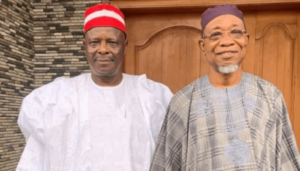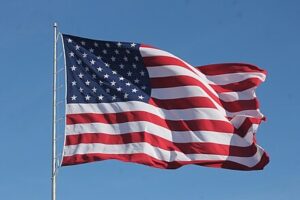
Public Safety Minister Marco Mendicino speaks about the government’s firearms buyback program in the Foyer of the House of Commons, Wednesday, April 26, 2023 in Ottawa.
The federal government is working with a national gun industry organization to figure out how to compensate retailers that stock prohibited firearms, Public Safety Minister Marco Mendicino says.
He announced the first phase of the federal government’s long-promised gun buyback program at a news conference in Ottawa on Wednesday.
Mendicino said the government signed a contract with the Canadian Sporting Arms and Ammunition Association to work with businesses and firearms stores. That contract, according to his staff, is worth just over $707,000 and extends into 2024.
“This is a significant milestone,” he said.
The government’s decision to ban about 1,500 models of firearms in May 2020 came just two weeks after the mass shooting in Nova Scotia, which was the deadliest in modern Canadian history. The federal Liberals have maintained that the weapons on that list are not suitable for hunting.
“These were guns that were designed for wartime. They have no legitimate recreational purpose,” Mendicino said Wednesday.
Ottawa also promised in May 2020 to develop a buyback program that would require owners to either sell the firearms to the government or have them rendered inoperable at federal expense. But that program has still not been developed.
Mendicino said stores in Canada have about 11,000 banned guns and related parts in their inventories, though the association hired to help said it did not know where that number came from.
Wes Winkel, president of the Canadian Sporting Arms and Ammunition Association, said on Twitter that the group wants to ensure firearms retailers “are informed of their options and receive their full compensation.”
Statements posted to the association’s Twitter account insist the group is not taking part in the actual buyback program and is participating only to negotiate fair compensation and a simple process. They say the group remains skeptical that the buyback program will work because there isn’t clear money to fund it, or a clear process to implement it.
In an interview later Wednesday, Winkel said the association remains opposed to banning the firearms in the first place.
He said the group was dragged into working with Ottawa “kicking and screaming.”
Winkel added it could take years before a buyback program for retailers is up and running.
Responding to those concerns, Mendicino said he knows the debate around firearms is difficult, but said the fact the association is willing to be involved is a “very positive development.”
“There’s a lot of toxicity when it comes to debating good, smart gun policy,” he said.
Raquel Dancho, the Conservatives’ public safety critic, suggested representatives of the firearms industry are only involved because they have no other option.
The Conservatives say the Liberal gun-control agenda fails to address violent crimes such as shootings, and instead unfairly targets gun owners who obey the law.
They are also concerned about the potential cost. The Parliamentary Budget Officer in 2021 pegged the potential cost of the buyback program to be upward of $750 million.
Mendicino said the Liberal government will be transparent about the cost of the program, which is expected to begin later this year, but he did not provide further details.
“We’re dedicated to moving forward with this program as quickly as we can, but we also have to make sure that we get the buyback program right. It’s a program that is without precedent. It’s national in scale. It’s going to involve a number of partners.”
The second phase of the buyback program would likely expand it to individual firearms owners, who currently have amnesty under an order that is set to expire in October.
Last year, the Liberals tried to build on the cabinet order banning the 1,500 gun models by adding an evergreen definition of a prohibited assault-style firearm as an amendment to gun-control legislation currently before Parliament.
Conservative MPs and some firearm advocates said the definition unfairly targeted many commonly used rifles and shotguns. Voices in favour of defining assault-style firearms in the bill said misinformation had clouded the debate.
But the Liberals ended up withdrawing the amendment in January.
Earlier this week, Mendicino told the public safety committee the government would be abandoning the plan to spell out each make and variety of banned firearm in lengthy lists appended to the federal gun-control bill.
But he said they are still working on a new definition for “assault-style firearms.”
Meanwhile, Alberta is asking the federal government to reverse the buyback program.
The province’s chief firearms officer, Teri Bryant, said Wednesday the initiative has nothing to do with public safety.
He also said the move to buy back firearms threatens the livelihoods of workers in what he called a thriving sector.
“These entrepreneurs established their businesses to safely provide the firearms community with the equipment it needs to continue the long, honourable tradition of firearms ownership in communities large and small all across this great country,” Bryant said during a press conference in Calgary.
“They should not be forced to turn their stocks over to the federal government at massive expense to Canadian taxpayers.”







